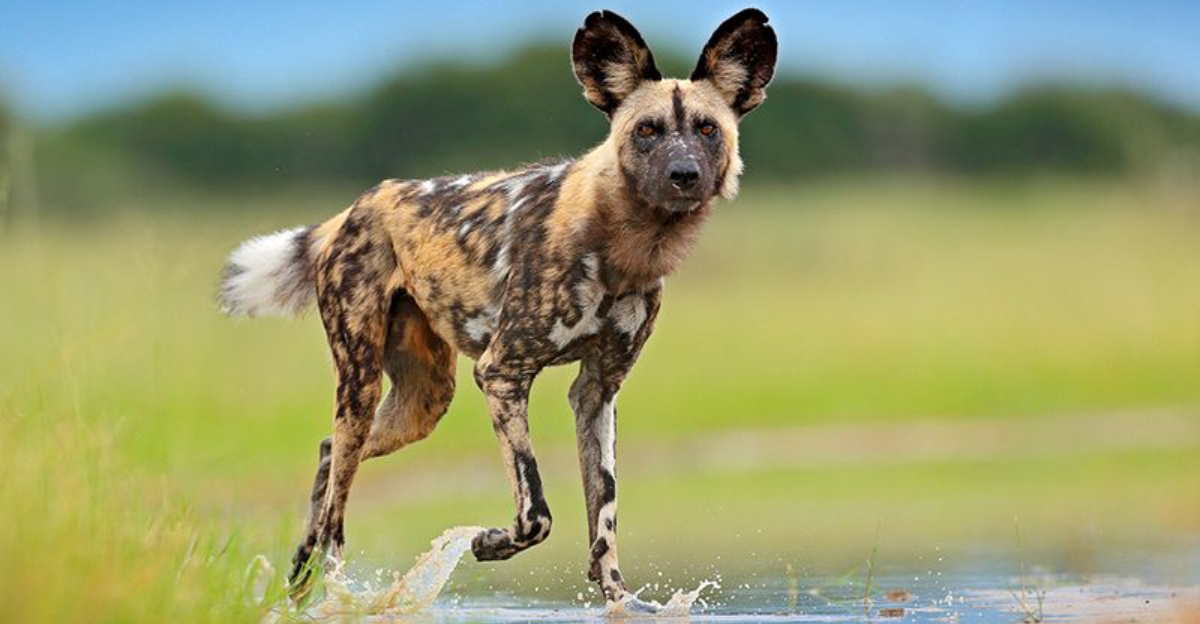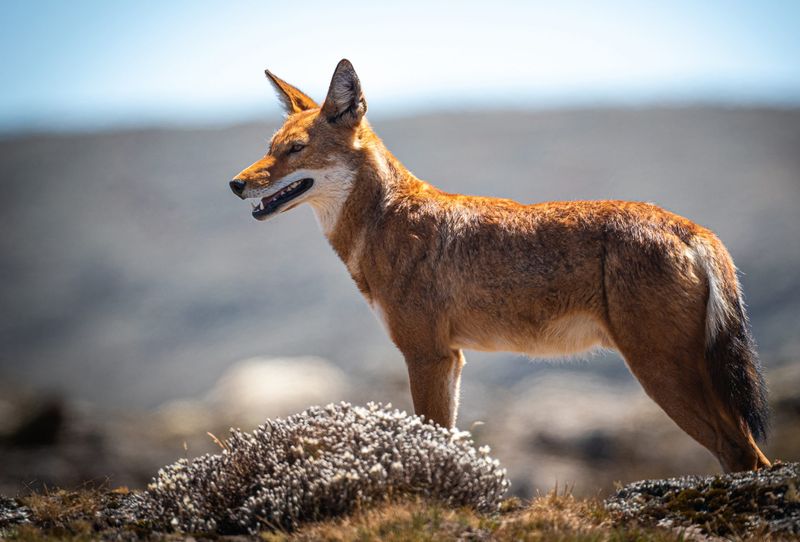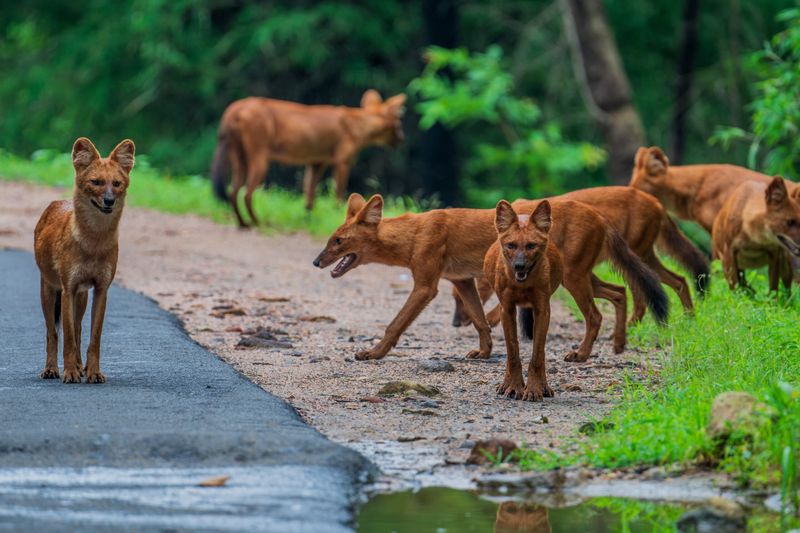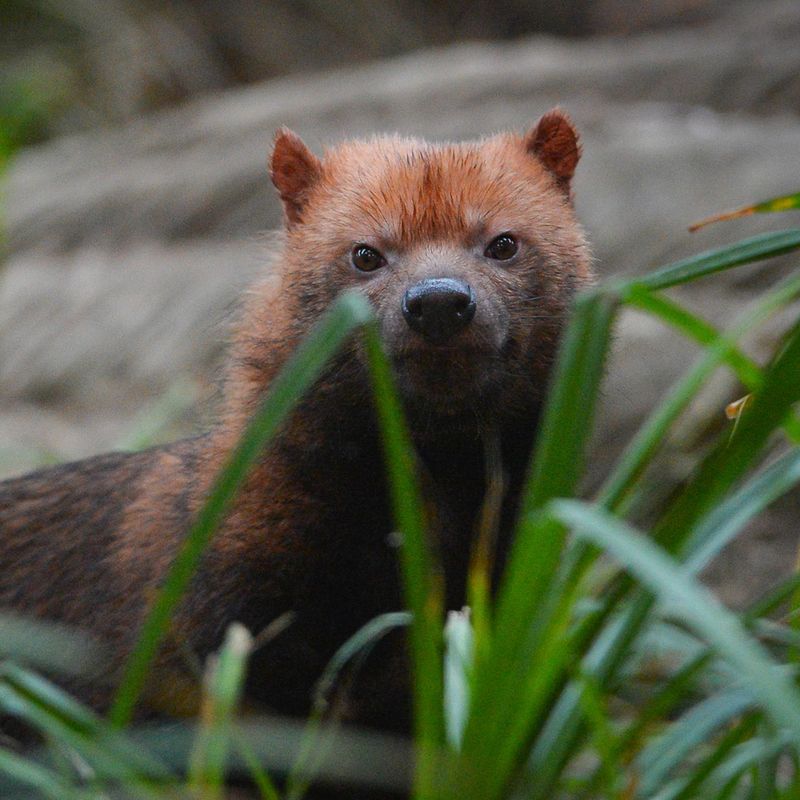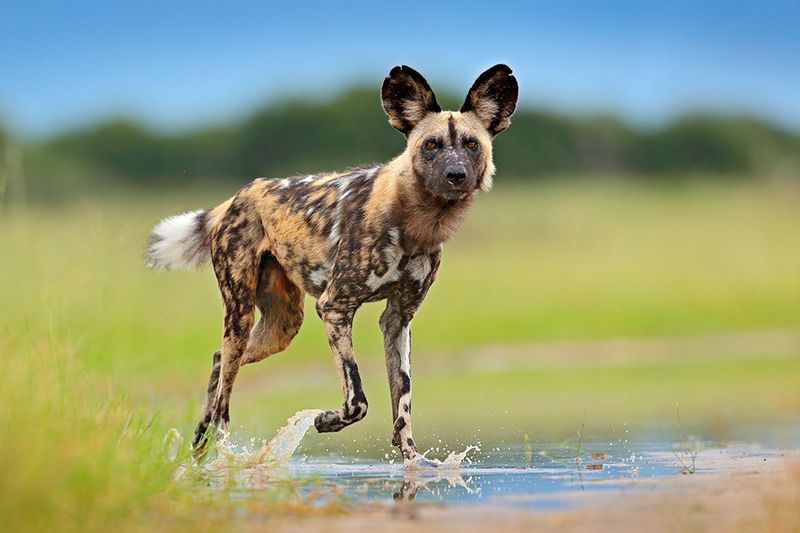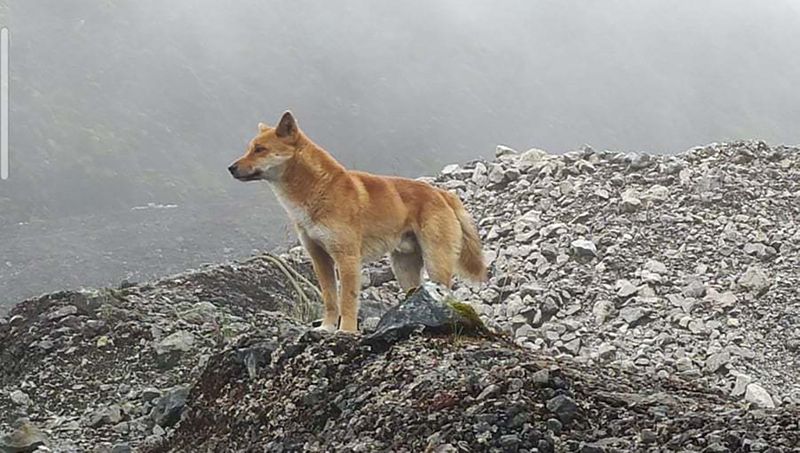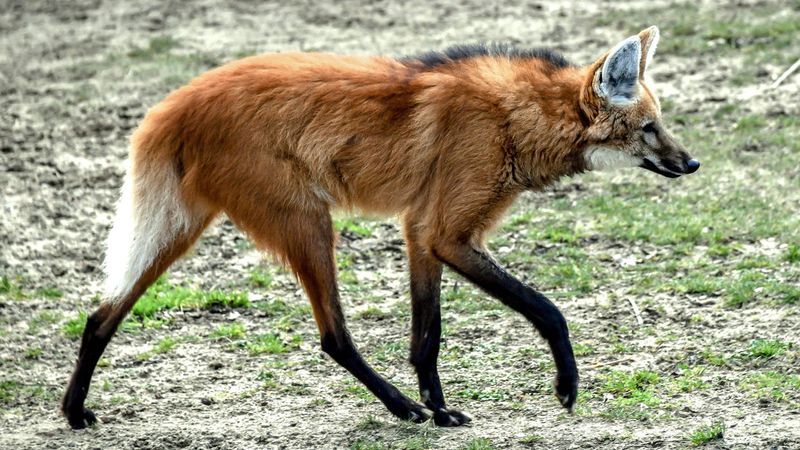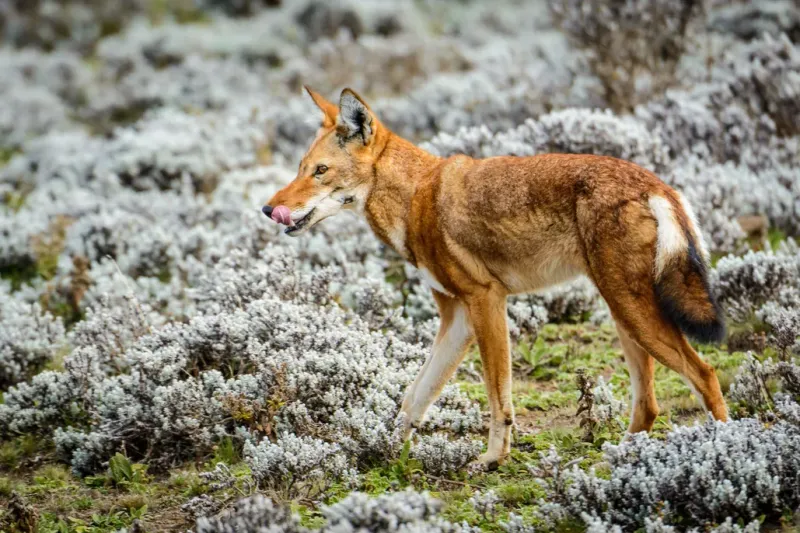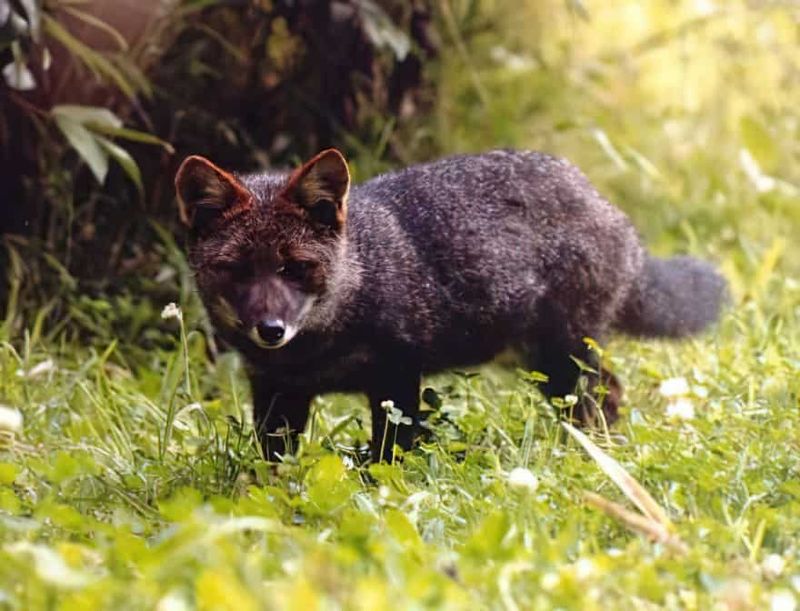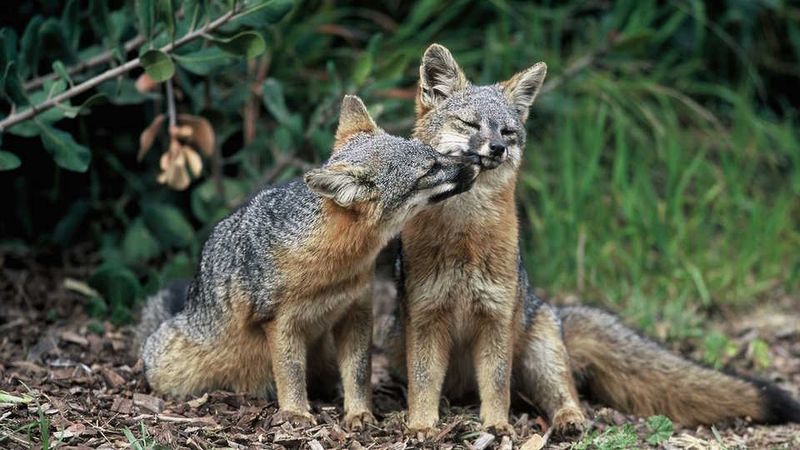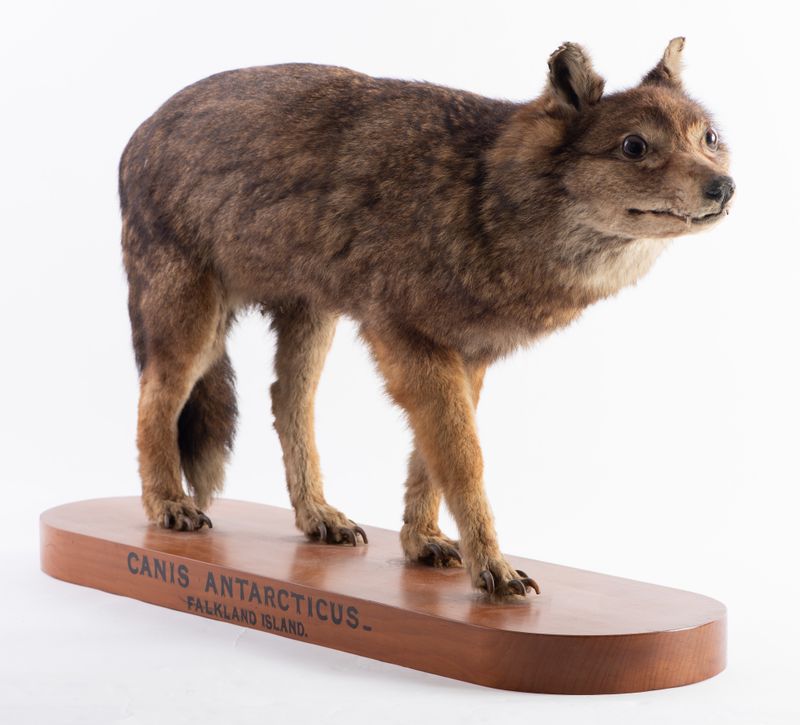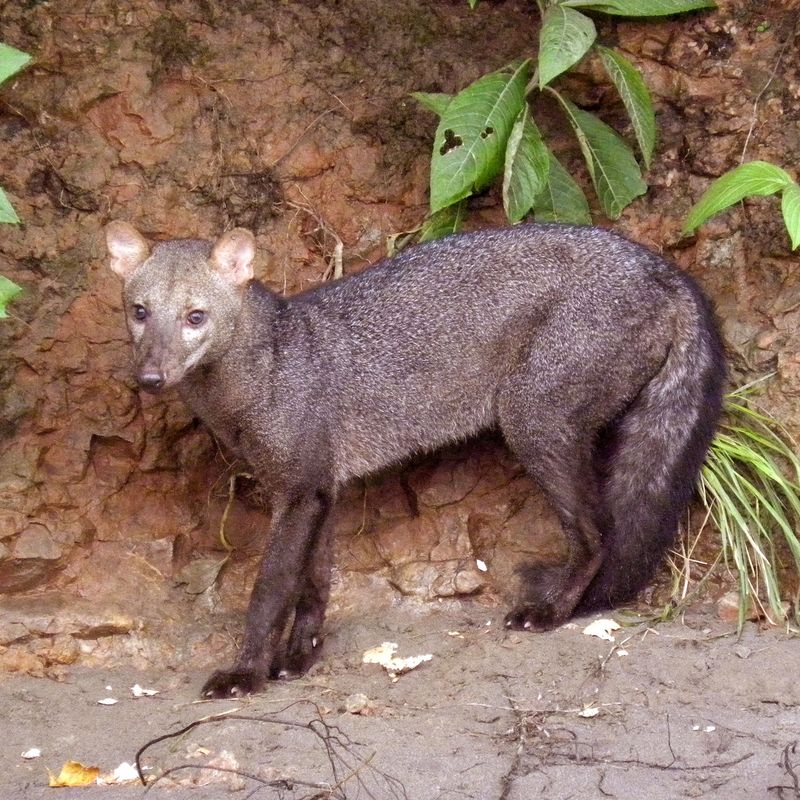Wild dogs are fascinating creatures that capture our imagination with their beauty, intelligence, and adaptability. However, some species are so rare that few people have ever seen them in the wild. Here, we explore 11 of the rarest wild dogs around the globe, each with its own unique story and characteristics. From the African wilderness to the dense forests of South America, we’ll uncover what makes these elusive canines so special.
Ethiopian Wolf
Known for its striking red fur and black-tipped tail, the Ethiopian Wolf is Africa’s most endangered carnivore. Found only in Ethiopia’s high-altitude regions, they live in packs but hunt alone. These wolves communicate using high-pitched yips and are skilled at catching rodents. Once numbering in the thousands, habitat loss and diseases have reduced their population drastically. Conservationists are working tirelessly to protect this species, focusing on vaccination programs to prevent rabies transmission from domestic dogs. Spotting this elusive wolf is a once-in-a-lifetime experience for wildlife enthusiasts visiting Ethiopia.
Dhole
The Dhole, or Asiatic wild dog, is a social and vocal species known for its whistling calls. Native to Asia, they thrive in diverse habitats from forests to grasslands. With their bushy tails and striking reddish coats, Dholes hunt in packs and are capable of taking down prey larger than themselves. Despite their adaptability, they face threats from habitat destruction and competition with other predators. Conservation efforts include habitat protection and connecting fragmented forest areas to support their roaming lifestyle. Their playful nature makes observing them in the wild a memorable experience.
Bush Dog
Bush Dogs are small, stocky canines native to South America, particularly the Amazon basin. They are unique for their webbed feet, which assist them in swimming. These elusive creatures live in packs and communicate with a series of high-pitched calls. Although their population is decreasing due to habitat loss, they remain a crucial part of the ecosystem by controlling rodent populations. Conservationists are striving to understand their habits better to protect them effectively. Observing Bush Dogs in their natural habitat is a treat for intrepid explorers.
African Wild Dog
African Wild Dogs, also known as Painted Dogs, are recognized by their unique patchy fur and large round ears. These social animals live in packs and are known for their cooperative hunting techniques. Currently, they inhabit isolated regions in sub-Saharan Africa, facing threats from human encroachment and diseases like distemper. Conservation initiatives focus on creating safe corridors linking fragmented habitats and educating local communities about the dogs’ ecological importance. Their high energy and intricate social structures make them fascinating subjects for wildlife enthusiasts.
New Guinea Singing Dog
The New Guinea Singing Dog is famous for its melodious howls, akin to a song. These dogs are native to the remote mountains of New Guinea and are rarely seen in the wild. With their agile bodies and acute senses, they adapt to the challenging terrain. Genetic studies show they share ancestry with the Australian Dingo, adding to their enigmatic allure. Conservationists strive to study and protect them, as they are considered a living relic of ancient dog breeds. Their unique vocalizations are a captivating experience for those who hear them.
Maned Wolf
The Maned Wolf, distinguished by its long legs and striking red coat, roams the grasslands of South America. Neither fox nor true wolf, it’s a unique species with a diet consisting mainly of fruits and small animals. Its long legs are adapted to its habitat, allowing it to see over tall grasses. Unfortunately, its population is declining due to habitat destruction and road kills. Conservation programs are working to protect its habitat and prevent further loss. Encountering a Maned Wolf in the wild is a rare and majestic sight.
Simien Jackal
The Simien Jackal, sometimes confused with the Ethiopian Wolf, is found in Ethiopia’s Simien Mountains. This rare canine is noted for its slender build and sharp features, thriving in harsh environments. They primarily feed on mole rats and other small mammals. Conservationists are focusing on preserving their natural habitat and mitigating conflicts with local farmers. Despite their challenges, Simien Jackals are an integral part of the ecosystem, helping control rodent populations. Observing one in its natural habitat is a thrilling experience for nature lovers.
Darwin’s Fox
Darwin’s Fox is a small, critically endangered fox native to Chile’s forests. With its dark, grey coat and bushy tail, it moves stealthily through dense foliage. Living in isolated pockets, these foxes are primarily nocturnal and feed on small animals and fruits. Habitat destruction and competition with domestic dogs pose significant threats to their survival. Conservationists are working to protect the forest ecosystems vital to their existence. Spotting a Darwin’s Fox is a rare opportunity to witness a species few have seen in the wild.
Island Fox
The Island Fox, native to California’s Channel Islands, is the smallest fox in North America. Despite its size, it plays a crucial role in its ecosystem, controlling insect and rodent populations. Its unique adaptation to island life has made it a subject of fascination among researchers. Conservation efforts have successfully brought the fox back from the brink of extinction, focusing on habitat restoration and captive breeding programs. Observing these little foxes in their natural island habitat is a delightful experience for visitors.
Falkland Islands Wolf
Though it no longer prowls the windswept Falklands, the Falkland Islands Wolf captures imaginations with its tale of mystery and extinction. With its thick, bushy tail and soft, tawny fur, this wolf was a solitary figure in its remote island home.
It’s fascinating how these wolves were the only land mammal on the Falklands, evolving in isolation for thousands of years. They were known for their curious nature, often approaching humans with interest rather than fear.
Tragically, the arrival of settlers led to their rapid extinction by the late 19th century, making it one of the first canid species to vanish in recent history. This history provides a poignant reminder of human impact on fragile ecosystems.
Short-eared Dog
The Short-eared Dog of the Amazon is as mysterious as it is rare. Known for its short ears and long, bushy tail, it navigates the dense rainforest with ease. This elusive species is primarily solitary, feeding on small mammals and fruits. Deforestation and habitat fragmentation threaten its survival, prompting conservationists to focus on protecting its rainforest home. Understanding the Short-eared Dog’s behavior and needs is key to its conservation. Spotting one in the wild is a momentous occasion for wildlife enthusiasts and researchers alike.
